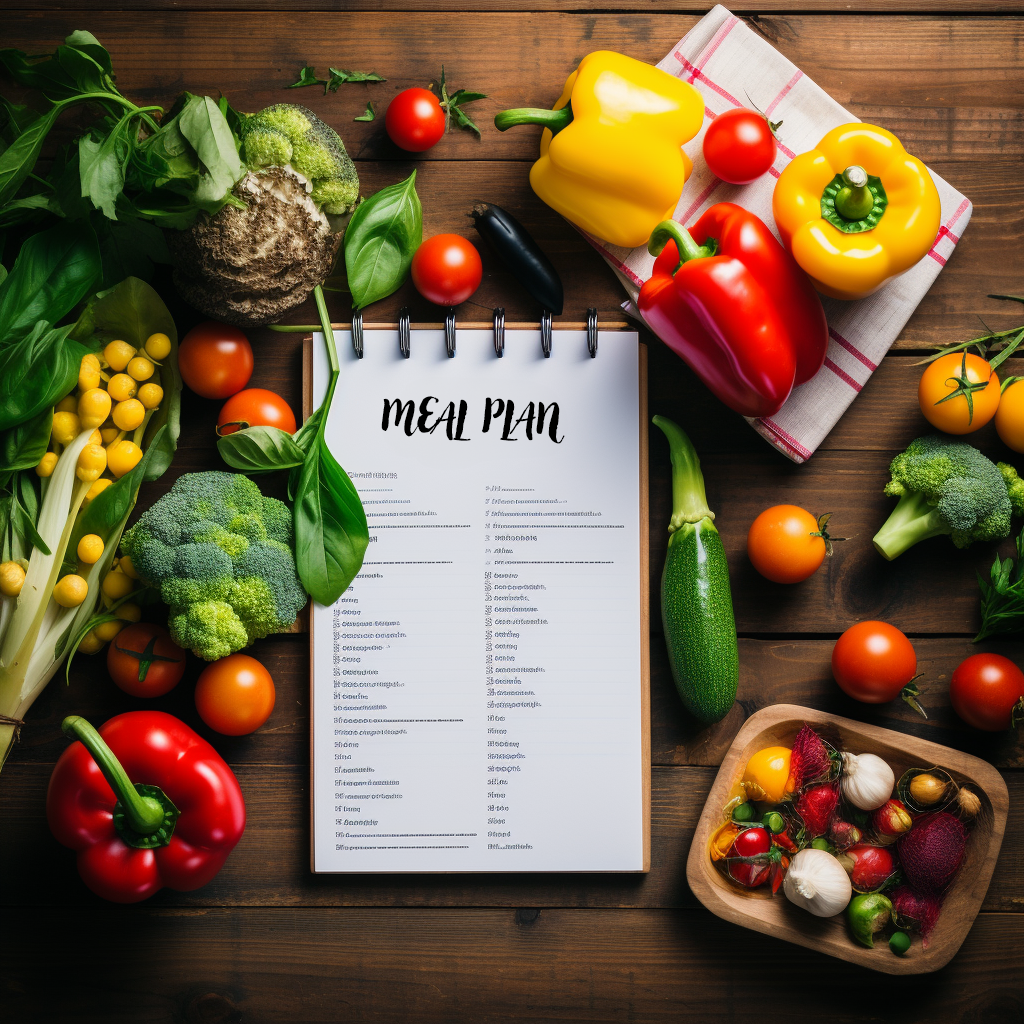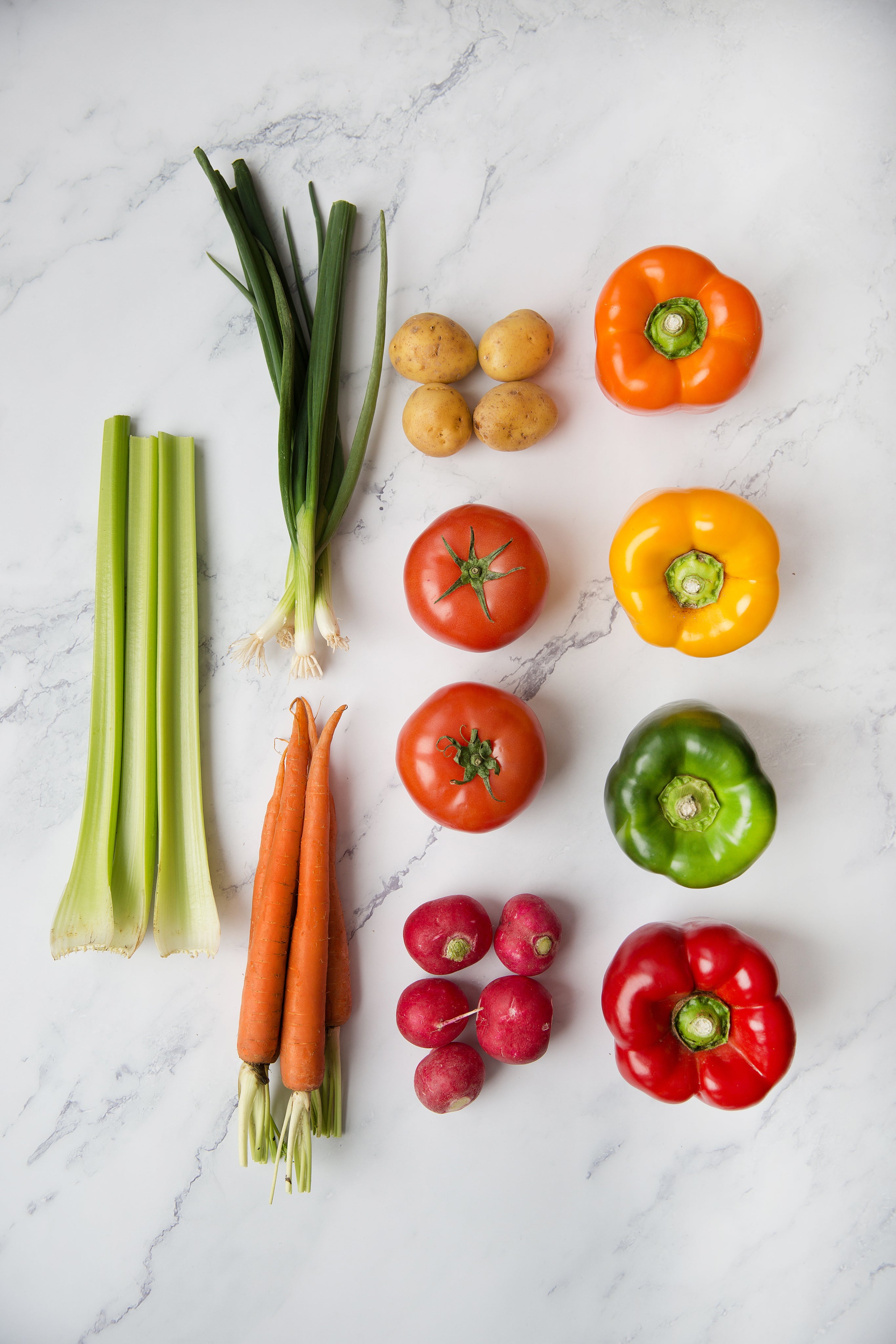Cooking is one of the most important activities in everyday life, but often it can be stressful to think about dinner every day and then get the right ingredients. The solution to this dilemma is to create a weekly cooking plan that not only saves time but also ensures that you and your family can enjoy varied and tasty meals. In this blog post, we will explain the steps necessary to create an efficient cooking plan, how to accommodate individual dietary needs and preferences, which tools or apps can help you, and how to incorporate seasonal and local produce and minimize food waste.
Step by step to your cooking plan

Step 1: Planning is key
Before you create your perfect cooking plan, it's important to invest time in planning. Take a few minutes at the beginning of each week to review your upcoming commitments and activities. This will give you an overview of how much time you have available to cook each day. Also take note of any special occasions or food requests your family may have.
Step 2: Consider individual needs and preferences
Many families have different preferences and nutritional needs. Some family members prefer vegetarian or vegan options while others are meat lovers. It's important to consider these differences to avoid conflict at the dinner table. Make a list of your family's likes and intolerances and incorporate them into your cooking plan. This ensures everyone enjoys a meal tailored to their individual needs.
Step 3: Use tools and apps to organize
To optimize your cooking plan, you can use a variety of tools and apps to help you organize. A popular option, for example, is a cooking plan app. These apps allow you to save recipes, create shopping lists, and plan your meals for the week. Some apps also offer the option to enter dietary needs and preferences to receive suitable recipe suggestions. This saves you time and effort when planning and organizing.
Step 4: Use seasonal and regional products
Using seasonal and regional products has many advantages. They are generally fresher, tastier and less expensive. You also support local agriculture and contribute to sustainability as fewer resources are required for transport. Research what foods are in season in your region and incorporate them into your cooking plan. This can also lead to more interesting and varied meals because you're regularly exploring new ingredients.
Step 5: Avoid food waste
Food waste is a serious problem that occurs in many households. To minimize this, include considerations for using leftovers and leftover ingredients in your cooking plan. One option is to plan meals where you can use similar ingredients to ensure nothing goes to waste. You could also use leftovers in creative recipes that give your family variety without becoming repetitive.
Example of a weekly cooking plan

- Lunch : Mixed salad with seasonal vegetables and grilled chicken (for the meat lovers) or grilled tofu (for the vegetarians)
- Dinner : Baked salmon with broccoli and brown rice
- Lunch : Quinoa salad with grilled vegetables and feta cheese or with grilled tofu (for the vegetarians)
- Dinner : Whole wheat pasta with tomato sauce (can be made with minced meat or vegetable minced meat) or vegetarian tomato sauce
- Lunch : Wrap with hummus, grilled vegetables and avocado or with grilled tofu (for the vegetarians)
- Dinner : Chicken soup with seasonal vegetables and fresh bread
- Lunch : Leftover chicken soup or vegetarian vegetable soup
- Dinner : Fried rice with vegetables and egg or with scrambled eggs (without meat)
- Lunch : Quinoa bowl with roasted pumpkin and pomegranate seeds or with grilled tofu (for vegetarians)
- Dinner : Pizza night with a variety of toppings based on the family's individual preferences, including vegetarian toppings
- Lunch : Grilled corn on the cob and salad
- Dinner : Lasagna (can be made with meat or vegetables) or vegetarian lasagna
- Lunch : Leftover pizza or lasagna
- Dinner : Vegetable curry with rice (can be prepared hot or mild according to individual preferences) or vegetable curry without meat
The benefits of a well-planned cooking plan

- Time saving:
- Cost control:
- Healthy eating:
- Diversity and variety:
- Stress reduction:
- Society and community:
- Sustainability:
- Promote Healthy Habits:
- Better Shopping Habits:
If you create a cooking plan, you can shop more specifically. You only buy the ingredients you need and avoid unnecessary purchases. This leads to more efficient use of your resources.
With a well-planned cooking plan, you can take your family's needs into account, use seasonal ingredients, minimize food waste and save time in the kitchen. In addition, you can look forward to delicious and varied meals that are suitable for your family. Try it out and make cooking and eating easier in your household.





